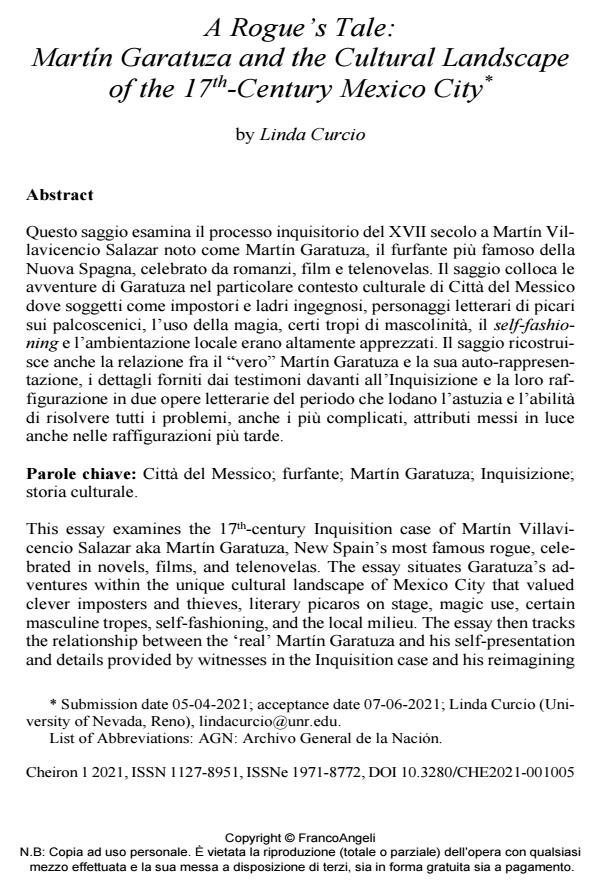A Rogue’s Tale: Martín Garatuza and the Cultural Landscape of the 17th-Century Mexico City
Journal title CHEIRON
Author/s Linda Curcio
Publishing Year 2022 Issue 2021/1
Language English Pages 28 P. 90-117 File size 302 KB
DOI 10.3280/CHE2021-001005
DOI is like a bar code for intellectual property: to have more infomation
click here
Below, you can see the article first page
If you want to buy this article in PDF format, you can do it, following the instructions to buy download credits

FrancoAngeli is member of Publishers International Linking Association, Inc (PILA), a not-for-profit association which run the CrossRef service enabling links to and from online scholarly content.
This essay examines the 17th-century Inquisition case of Martín Villavicencio Salazar aka Martín Garatuza, New Spain’s most famous rogue, celebrated in novels, films, and telenovelas. The essay situates Garatuza’s adventures within the unique cultural landscape of Mexico City that valued clever imposters and thieves, literary picaros on stage, magic use, certain masculine tropes, self-fashioning, and the local milieu. The essay then tracks the relationship between the ‘real’ Martín Garatuza and his self-presentation and details provided by witnesses in the Inquisition case and his reimagining in two literary works of the time period that lauded this cleverness and ability to persuade and solve any problem no matter how complicated, attributes highlighted in all subsequent re-imaginings.
Keywords: Mexico City; rogue; Martín Garatuza; Inquisition; cultural history.
Linda Curcio, A Rogue’s Tale: Martín Garatuza and the Cultural Landscape of the 17th-Century Mexico City in "CHEIRON" 1/2021, pp 90-117, DOI: 10.3280/CHE2021-001005